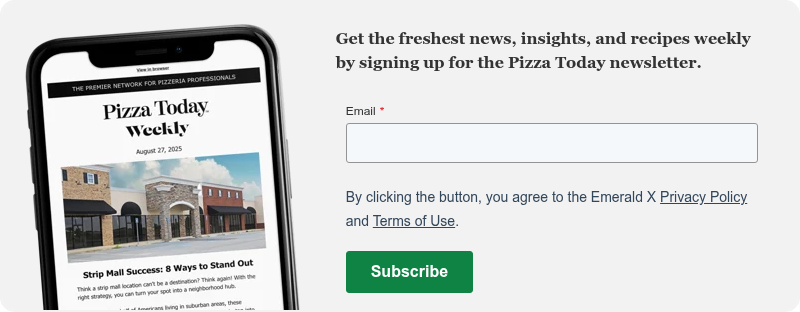How easy are you to find on online review sites?

Scott Wiener
Founder, Scott’s Pizza Tours and SliceOutHunger.org
Believe it or not, I was relieved to find out via text message that the movers had delivered all of my Earthly possessions to the wrong address. With some free time on my hands, I decided to do what any normal person would do and investigate my new neighborhood’s pizza scene. My new apartment isn’t technically very far from the old one, but four miles in New York City is like a hundred anywhere else.
To find out if there were anything good in my new ‘hood, I first pulled out my phone and hit up the Google Maps app. When someone asks me for a recommendation in a neighborhood I’m not instantly familiar with, my first step is to search “pizza” on the map and scour nearby results for familiar names. The search results the morning I moved were pretty bleak, with a few national chains near the subway and some anonymous sounding mom-and-pops slightly beyond. There were probably a few local pizzerias that didn’t make it to the search results because their names and descriptions don’t include the word “pizza.” Even if all my neighborhood pizzerias did show up on the map, all I would get are names and short descriptions. Phrases like “Petite no-frills joint for slices and pies” or “Wood-fired pizzas and rustic small plates” don’t always give me the information I need. If I want curation, I have to take it to the next level.
I’m not a contributor to review sites like Yelp, but I do use them as references. Their restaurant descriptions are better than Google’s and they get way more reviews. Clicking on each map result opens a handy window with basic information like address, price point, overall score, number of reviews, and distance from my current location. Yelp highlights sponsored listings, which I instantly ignore. If a restaurant has to pay for placement on Yelp, I tend to assume it must not be very good.
Online ordering sites like Seamless/GrubHub, Uber Eats, Caviar and their competitors are good resources for finding out whose delivery range I fall within. These companies are constantly expanding, so I have to check in with them every couple of weeks. While there are a ton of multi-purpose food sites, Slice (SliceLife.com, formerly MyPizza.com) offers online ordering only for pizzerias. They’re the best resource for my situation because they specialize in pizza and their system is built with that in mind. Instead of reviews, they have a “Like” function, so customers can show support with positivity instead of detracting with negative reviews.
I don’t spend too much time reading reviews, but I always scan through the photos posted by review site users. I recently started using a social food photos app called Wine ‘n Dine, which lets me see user-uploaded photos of food from your restaurant. It even gives me a “Wanna Try” list to help me keep track of pizzerias and dishes I have yet to check out.
I’m fortunate to live in a city that’s so clogged with pizzerias that we don’t see many door hangers or coupon mailers from anyone besides the big chains, so it’s really up to me to locate and assess pizzerias in my new neighborhood. Thankfully that task is getting easier with the proliferation of app-based services that are designed to connect customers like me to pizzerias like yours.
Scott Wiener is the founder of Scott’s Pizza Tours in New York City and SliceOutHunger.org



